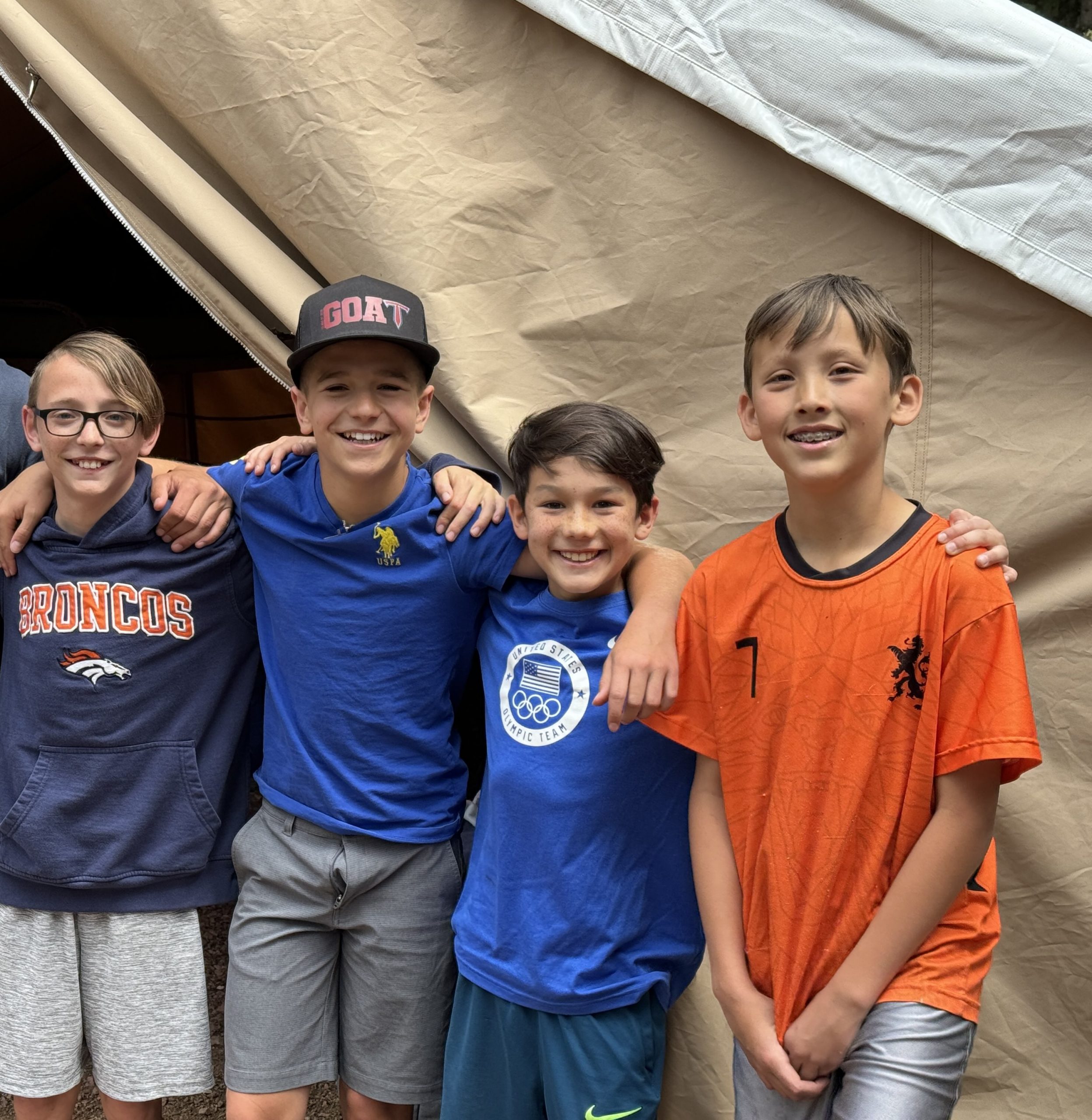BRIDGING GENERATIONAL COMMUNICATION GAPS TO TALK TO GEN Z AND GEN ALPHA
Remember when millennials were considered the “young generation”? Well, times have changed! You may have blinked and now suddenly finding Gen Alpha kids in your WyldLife clubs! Today, we see a mix of Gen Z and Gen Alpha in our clubs at Young Life from middle schoolers in our WyldLife clubs all the way up to Gen Z students in our college clubs. Today’s teenagers and young adults belong to Generation Z (born 1997-2012), while the newest kids on the block are Generation Alpha (born 2013 onwards). If you’re finding it challenging to connect with these digital natives, you’re not alone.
There are definitely some nuances for speaking to these rising generations, but there are also a few tried and true basics. While the slang might throw you, there ARE a few ways we can connect with adolescents today!
Before we go too far, let’s make sure we have a handle on who we’re talking about when we say Gen Z and Gen Alpha:
UNDERSTANDING GENERATION Z:
Generation Z, often called “Gen Z” or “Zoomers,” includes those born between 1997 and 2012, making them roughly 12 to 27 years old in 2024. They’re the first true digital natives, having grown up during the smartphone revolution and the rise of social media. This generation came of age during significant historical events like the Great Recession, the COVID-19 pandemic, and an increasingly volatile political climate. These experiences have shaped them into pragmatic, socially conscious individuals who value financial security, authenticity, and digital connection. Unlike millennials who remember dial-up internet and flip phones, Gen Z has always lived in a world of high-speed connectivity and instant information access.
UNDERSTANDING GENERATION ALPHA:
Generation Alpha, born from 2013 onwards, represents the first generation born entirely in the 21st century. The oldest Alphas are now entering their teenage years, while the youngest are still being born. These children are true technology integrators — they’re not just digital natives, they’re AI natives, having grown up with voice assistants, smart devices, and algorithmic recommendations as part of their daily lives. They experienced their early education during the COVID-19 pandemic, making them adaptable to both virtual and in-person interactions. As children of predominantly millennial parents, they’re being raised with a greater emphasis on emotional intelligence, sustainability, and inclusive values. Many experts predict they’ll be the most formally educated, technologically immersed, and globally connected generation yet.
[While we’re seeing Gen Alpha students entering their teenage years, our world is still learning a lot about them and how they think. Honestly, they are too! So, most of the perspective here is largely focused on what we know and have experienced about Gen Z.]

PSYCHOLOGICAL FOUNDATIONS OF COMMUNICATION
“When we embrace the value of self-discovery, we help teens learn how to think for themselves and how to handle big emotions. Holding space for someone in a relationship setting is a sacred opportunity.” — Sandy Malone, MA, NCC, LPC
Now geek out here with us for a few minutes, will you? We want to set the stage with some basic psychology principles that will help us understand how to go deep with not only an adolescent, but really anyone else too.
There are five layers of processing information we all make more times than we can realize in a day. The first layer starts in the amygdala where we respond with either fight, flight, freeze, or fawn. Then, we assess and decide if something is good, bad, or scary. From there, we consider “am I alone?” which quickly leads to a layer of identity around “who am I?” and “who are my people?” The final layer of processing information is centered around clarity where we can actually think clearly about a situation. Before we hit that moment of clarity, we really can’t think clearly.
Psychologists agree that the biggest indicator in mental health as an adult is learning to express and regulate emotions as a child. There are more and more conversations now around how parents can help children learn how to come back to calm in an atmosphere that’s safe. But, it’s not just up to parents. Around age 12, children start looking outside of the immediate family for identity and community.
Adolescents are learning how to find their identity and process emotions, and since they’re starting to look outside of their nuclear family, we have a huge opportunity. This is right around the time our clubs for middle schoolers start, placing Young Life leaders in a prime position for impact! This means some tough, charged, excitable, or often tearful conversations with them. Just as their parents have been trying to guide them, we now have the cool opportunity to help them get back to calm and walk through the five layers of processing situations and information. We can help them move from a snap response to a new situation, to getting to clarity where they can make clear decisions.
You may not even realize the holy moments you’re stepping into with a teen, or that all of this processing is happening in split seconds all around you, but when we step back and consider how much is happening developmentally and emotionally for teens, we realize what a huge honor and responsibility it is to have a chance to hear their stories. It’s a big deal!
THE DIGITAL-FIRST MINDSET
First things first: these generations have never known a world without smartphones, social media, or instant access to information. This isn’t just a lifestyle choice — it’s their default operating system. We can’t fault them for it, and it’s vital we understand this framework as we seek to connect.
WHAT THIS MEANS FOR COMMUNICATION:
- They process information at lightning speed
- Short, visual content is their love language
- They’re masters of multitasking (though whether that’s actually effective is another story!)
- Text-based communication often feels more natural than face-to-face
PRO TIPS:
- Embrace digital tools, but don’t try too hard to be “hip” — they can spot inauthenticity from a mile away
- Use visual aids when explaining complex topics
- Break information into digestible chunks
- Don’t shame their digital habits — work with them instead
THE ART OF SPEAKING THEIR LANGUAGE
“When we train our Young Life ONE staff/leaders, I tell them all the time, they don’t care if you know what’s cool on TikTok or even who the popular celebrities are right now — they care about if you are being yourself, because that’s the only way they will trust you.”
— Rachel Karman, Young Life ONE
What Works:
- Be direct: Skip the fluff and get to the point
- Use humor
- Use their name
- Show, don’t tell: Visual demonstrations > lengthy explanations
- Be interactive: They prefer dialogue over monologue [Tips for opening up dialogue in smaller group settings.]
- Ask Questions
What Doesn’t Work:
- Talking down to them
- Using outdated slang (please retire “on fleek”)
- Making assumptions about their interests
- Dismissing their digital experiences as “not real life”
UNDERSTANDING THEIR VALUES
Both Gen Z and Alpha are notably different from previous generations in their core values and concerns. They care … A LOT and are ready to go change the world!
SOCIAL JUSTICE WARRIORS (FOR REAL)
These generations are inherently inclusive and socially conscious. They care deeply about:
- Climate change and environmental issues
- Social equality and justice
- Mental health awareness
- LGBTQ+ rights
- Racial equality
- Economic fairness
AUTHENTICITY RULES
They value:
- Real, unfiltered content over polished perfection
- Genuine personalities over carefully curated images
- Direct communication about feelings and boundaries
- Brands and people who stand for something
THE EDUCATION ANGLE
When it comes to learning and engagement:
What They Love:
- Interactive learning experiences
- Technology integration
- Real-world applications
- Collaborative projects
- Immediate feedback
- Flexibility in approach
What They Question:
- Traditional authority structures
- “Because I said so” reasoning
- One-size-fits-all approaches
- Rigid rules without clear purposes
MENTAL HEALTH AWARENESS
Both generations are notably more open about mental health:
- They appreciate adults who normalize mental health discussions
- They’re more likely to seek help and support
- They value emotional intelligence
- They expect understanding about anxiety and stress
How to Support Them:
- Create safe spaces for expression
- Listen without judgment
- Validate their feelings
- Share appropriate resources
- Model healthy coping mechanisms
BUILDING TRUST AND RESPECT
“Our current youth have seen and been a part of every program, it’s impossible to try and top what they’ve seen, but they are under-resourced in relationships. So just bring yourself and your ability to form strong healthy relationships.” — Rachel Karman, Young Life ONE
“Be genuinely interested in them and ask questions! Do these on a consistent, regular basis to build trust.” — John Evans, Young Life Training
Do:
- Listen actively and show genuine interest
- Respect their privacy and boundaries
- Acknowledge their expertise in certain areas
- Be transparent about your own learning journey
- Show up consistently
- Admit when you don’t know something
Don’t:
- Dismiss their concerns as a “phase”
- Compare them to previous generations
- Assume they’re tech-savvy in all areas
- Push them to share more than they’re comfortable with
THE FUTURE FOCUS
Both generations are incredibly future-oriented, but in different ways:
Gen Z:
- Practical and pragmatic
- Focused on financial security
- Interested in alternative career paths
- Values work-life balance
Gen Alpha:
- Growing up with AI and advanced tech
- Expecting personalized experiences
- Highly adaptive to change
- Natural entrepreneurs
PRACTICAL COMMUNICATION STRATEGIES
Meet Them Where They Are
“Speak their name out loud; the sweetest sound to anyone’s ears is the sound of their own name. Remember their name and their interests the next time you see them and they’ll never forget you.” – Jonathan Drinkwine, area director
- Use their preferred communication platforms
- Respect their communication style preferences
- Be open to new ways of connecting
Make It Relevant
- Connect topics to their interests
- Show real-world applications
- Use current examples
Keep It Real
- Be honest about your own challenges
- Share appropriate personal experiences
- Maintain professional boundaries while being approachable
Remember that while these generations may seem different from those that came before, they’re navigating an increasingly complex world with remarkable resilience and creativity. They value authenticity, justice, and meaningful connections — even if they express these values differently than previous generations.
The key to connecting with Gen Z and Alpha isn’t about mastering their slang or becoming a TikTok expert. It’s about showing genuine interest, respecting their perspectives, and being willing to learn from them while sharing your own wisdom in relatable ways.
The “generation gap” isn’t so wide after all. When it comes down to it, they want what every generation before them has wanted: to be understood, respected, and supported as they make their way in the world. Thankfully around Young Life, we know how important it is to build friendship, trust, and rapport first, while we earn the right to be heard.







